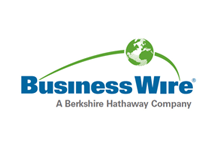Global Feed Enzymes Market Size is Projected to Grow from USD 1.2 Billion in 2019 to USD 2.0 Billion by 2025, at a CAGR of 9.1% - ResearchAndMarkets.com
The "Feed Enzymes Market by Type (Phytase, Carbohydrase, and Protease), Livestock (Poultry, Swine, Ruminants, and Aquatic Animals), Source (Microorganism, Plant, and Animal), Form (Dry and Liquid), and Region - Global Forecast to 2025" report has been added to ResearchAndMarkets.com's offering.
Provision of cost-efficiency in the usage of feed and increasing demand for animal-based products, such as meat products, dairy products, and eggs, are projected to drive the growth of the global feed enzymes market
Provision of maintaining cost-efficiency in the usage f feed; increasing demand for animal-based products, such as meat products, dairy products, and eggs; and a rise in the global demand for naturally produced feed additives drive the feed enzyme industry. However, the hydrolysis of cellulose, which remains difficult, is projected to hinder the growth of the market.
The poultry segment, by livestock, is estimated to dominate the feed enzymes market in 2019
Poultry is domesticated for the production of eggs and meat for consumption. Many factors impact the feed intake of poultry birds and significantly impact the nutritional well-being and efficiency of poultry production. The poultry segment accounted for the largest share in 2018, in terms of value. The dominance of poultry can be attributed to the increased consumption of poultry meat in the Asia Pacific region, as consumers are adding white meat instead of red meat to their diets.
The phytase segment, by type, is projected to account for the largest share during the forecast period in the feed enzymes market
Phytases are digestive enzymes that release plant phosphorus from phytic acid; monogastric animals, such as poultry birds, lack sufficient phytases to release this phosphorus. Adding extra phytases to the diet increases phytate breakdown and consequent utilization of plant phosphorus. According to DuPont, one of the major feed enzyme manufacturers, phytases are the most widely used type of feed enzymes in the world, included in 90% of poultry and 70% of swine diets. Thus, increasing phytic acid degradation and improving the availability of plant phosphorus could have major benefits for poultry and swine producers, including lower levels of inorganic phosphorus inclusion in diets, reduced feed costs, and better sustainability of animal production.
Asia Pacific is projected to be the fastest-growing region in the feed enzymes market
Asia Pacific dominated the feed enzymes market in 2018; this has been supported by the presence of a large livestock population (FAO 2016) and the growth rate. Also, livestock producers in China and India are focusing on animal health by resorting to natural solutions. Additionally, there has been a rise in the demand for meat and meat products, in accordance with the need for a protein-rich meat diet. The market for poultry is estimated to increase in India and China due to factors such as the focus on meat quality and public health campaigns, which encourage the consumption of lower-fat protein options. Fish consumption is also increasing in the region, owing to similar health trends. On the other hand, there has been an increase in production as well as consumption of dairy products in the region. These factors are expected to drive the feed enzymes market in the Asia Pacific region.
Key Benefits of Buying the Report
The report will help the market leaders/new entrants in this market with information on the closest approximations of the revenue numbers for the overall feed enzymes market and its sub-segments. This report will help stakeholders understand the competitive landscape and gain more insights to position their businesses better and to plan suitable go-to-market strategies. The report will also help the stakeholders to understand the pulse of the market and will provide them with information on key market drivers, restraints, challenges, and opportunities.
Key Topics Covered:
1 Introduction
1.1 Objectives of the Study
1.2 Market Definition
1.3 Study Scope
1.4 Periodization Considered
1.5 Currency Considered
1.6 Units Considered
1.7 Stakeholders
2 Research Methodology
2.1 Research Data
2.2 Market Size Estimation
2.3 Data Triangulation
2.4 Research Assumptions
2.5 Limitations
3 Executive Summary
4 Premium Insights
4.1 Opportunities in the Feed Enzymes Market
4.2 Feed Enzymes Market, By Type and Region, 2019
4.3 Asia Pacific: Feed Enzymes Market, By Livestock and Country, 2019
4.4 Feed Enzymes Market, By Form, 2019
4.5 Feed Enzymes Market, By Key Country, 2019
5 Market Overview
5.1 Introduction
5.2 Macroindicators
5.3 Market Dynamics
5.4 Value Chain
5.5 Regulatory Framework
6 Feed Enzymes Market, By Function
6.1 Introduction
6.2 Performance Enhancement
6.3 Feed Efficiency
7 Feed Enzymes Market, By Type
7.1 Introduction
7.2 Phytase
7.3 Protease
7.4 Carbohydrase
7.5 Others
8 Feed Enzymes Market, By Source
8.1 Introduction
8.2 Microorganism
8.3 Plant
8.4 Animal
9 Feed Enzymes Market, By Form
9.1 Introduction
9.2 Dry
9.3 Liquid
10 Feed Enzymes Market, By Livestock
10.1 Macroindicators
10.2 Connected Market: Feed Additives
10.3 Introduction
10.4 Poultry
10.5 Swine
10.6 Ruminants
10.7 Aquatic Animals
10.8 Others
11 Feed Enzymes Market, By Region
11.1 Introduction
11.2 North America
11.3 Europe
11.4 Asia Pacific
11.5 South America
11.6 Rest of the World (RoW)
12 Competitive Landscape
12.1 Overview
12.2 Company Ranking
12.3 Competitive Leadership Mapping
12.4 Competitive Leadership Mapping (For Smes/Start-Ups)
12.5 Competitive Scenario
13 Company Profiles
13.1 BASF SE
13.2 Dowdupont
13.3 Koninklijke DSM N.V
13.4 Bluestar Adisseo
13.5 Cargill
13.6 Associated British Foods PLC
13.7 Novozymes
13.8 Advanced Enzyme Technologies
13.9 Kemin Industries, Inc.
13.10 Novus International Inc.
13.11 Azelis Holdings SA
13.12 Alltech
13.13 Bio Cat
13.14 Rossari Biotech Ltd.
13.15 Biovet JSC
13.16 Bec Feed Solutions
13.17 Bioresource International Inc.
13.18 Amorvet
13.19 Nutrex BE
13.20 Sunson Industry Group Co. Ltd.
For more information about this report visit https://www.researchandmarkets.com/r/vqy16p
View source version on businesswire.com: https://www.businesswire.com/news/home/20200114005487/en/




